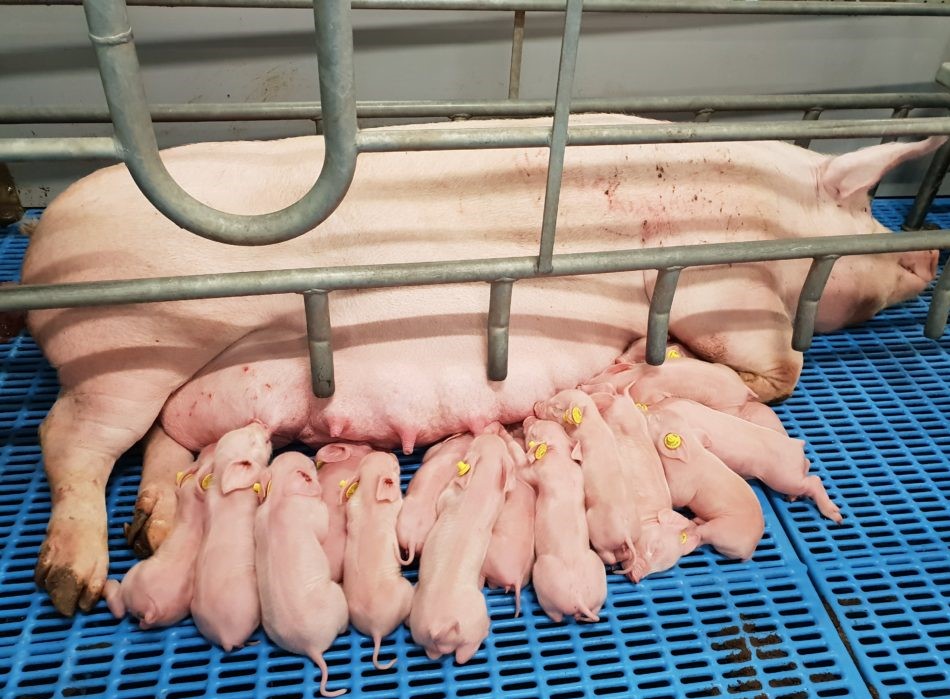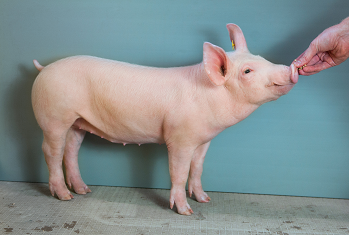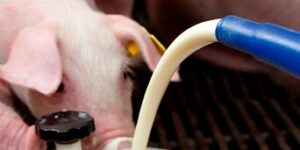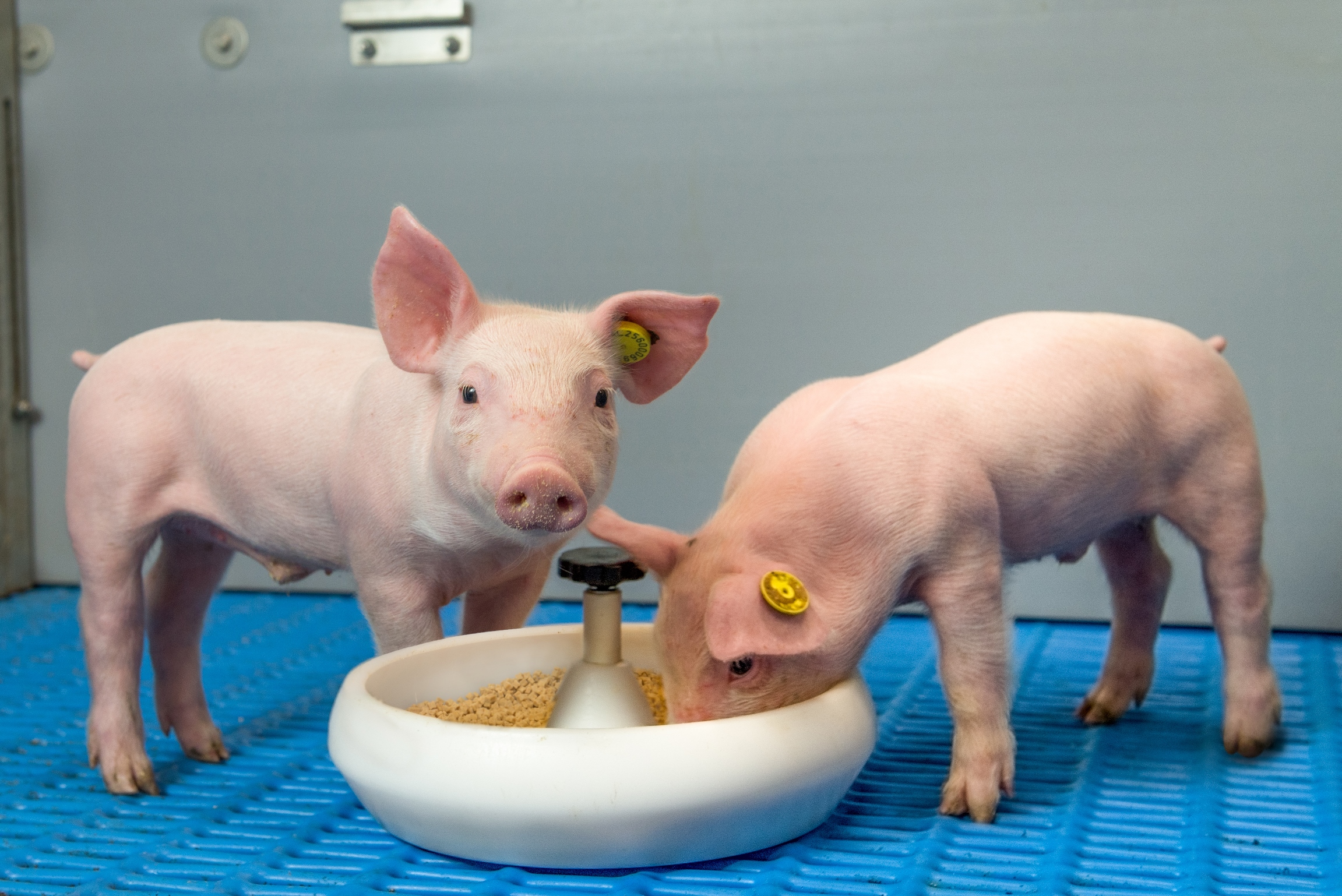Feeding a prestarter after weaning pays off
Due to the high feed prices, many pig farmers are looking to save on feed costs for piglets. Nevertheless, providing a prestarter in the suckling period up to around day five after weaning is the most profitable,’ says Ashley Sijmonsbergen of Denkavit. Moreover, it is easy to work with and safer for the piglets’ intestines. And the total efficiency is comparable or even slightly higher, depending on the circumstances.
In the Denkavit Innovation Centre Pig Farm, a study with two feeding strategies around weaning with TN70*TN Tempo piglets took place in July-August 2021. This practical research responds to the rising feed prices. Twenty litters in group A were given a prestarter (Top Wean) from a few days after birth until five days after weaning. After that, they were given a weaning diet for ten days, followed by rearing diet until the measuring moment on day 36 after weaning. In group B, twenty litters were abruptly switched to a weaning diet one week before weaning. This basic weaning diet was provided until day 15 after weaning, after which the piglets were given a rearing diet. Sijmonsbergen explains the results.
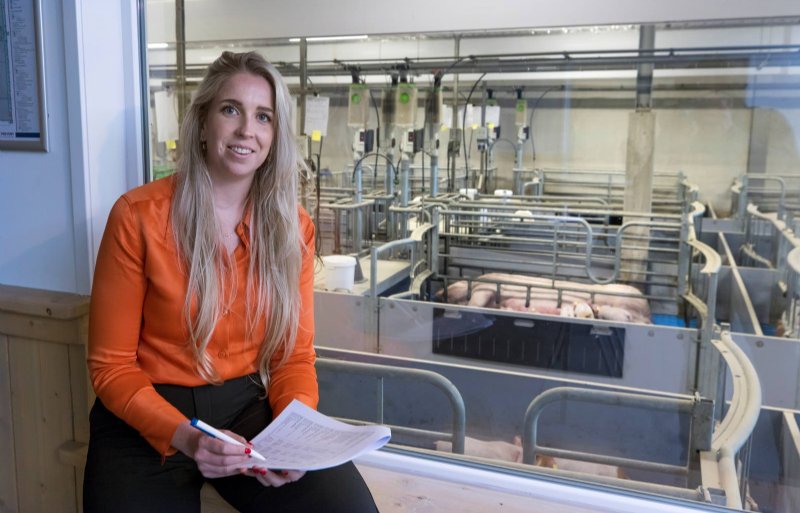
Why this feeding study with piglets?
Fifteen years ago, we carried out the same feeding study, but the weaning weights were lower at that time, and the pig breed and health situation was different. We wanted to see if the results showed the same trend. Feeding prestarter until five days after weaning then gave the highest intake in the farrowing phase and the critical period after weaning. As a result, the pigs took in more feed in the follow-up phase and grew faster.
Is this still the case under the present circumstances?
The technical results are comparable and clearly in favor of implementing the prestarter. The economy is quite different at the moment. Feed prices are high and pig farmers start to make calculations. For a pig farmer, feeding a prestarter for a short period often feels like saving on feed costs, but he is missing out on benefits.
“Supplying less starter often feels like saving on feed costs, but the total return is lower.” Ashley Sijmonsbergen, productmanager Piglet Feed at Denkavit.
What are the benefits?
The prestarter group consumed 84 grams more per piglet (on average) before weaning and weaning weights were 300 grams higher (on average). In the first five days after weaning, these piglets also eat 20 grams more of the smaller, tastier, and softer feed pellets on average per day. This is because the piglet’s intestinal system has been able to adjust to digesting solid feed for a sufficiently long time during the suckling period. Even if they are then abruptly switched to weaning feed, the piglets will continue to eat undisturbed. They have a voracious appetite, which means they continue to eat 34 grams more per day, on average, than the piglets in group B. The difference in weight on day 36 after weaning has increased to an average of 400 grams per piglet’.
An abrupt feed switch is not common practice, is it?
In practice, the changeover might be a bit more gradual. But if you want to do it right for the piglets’ intestines, you have to keep mixing two feeds for three days. However not every farm takes the time to do that.
What conclusion do you draw from this piglet feed study?
An extra switching moment before weaning on a cheaper weaning feed that is less attuned to the piglet’s specific needs is at the expense of intake and growth. With the healthy, robust animals at Pig Farm, the weaning process went equally smoothly in both groups. This means that no difference was found in the scores for manure consistency around feed changes and the drop-out rate and several treatments after weaning. If the health of a farm is less optimal, a breed is more sensitive to the gut or the eating capacity of a piglet is more limited, the extra stress moment of a feed switch in the suckling period can lead to more weaning problems.
What is the economic result of the study?
If we sum up the differences in technical results and feed costs, the two feeding strategies break even. However, the advantage is in favor of implementing a prestarter around weaning. The feeding strategy is easier, it is safer for the piglets, the piglet quality is better and the extra growth will continue until the moment they go to the slaughterhouse.
Do you also follow these piglet in the finishing phase?
No, because we are producers of young-animal feed, the focus of our research is on piglets up to around 63 days of age. However, our piglets all go to a commercial fattener and are equipped with RFID ear numbers. So we could collect data from individual animals up to the slaughter hook. It would of course be interesting to get confirmation that piglets that eat better and grow faster here also perform better at the fattening farm.
Source: Varkens.nl




